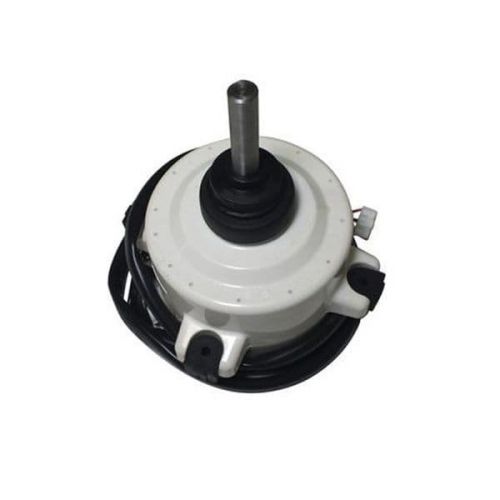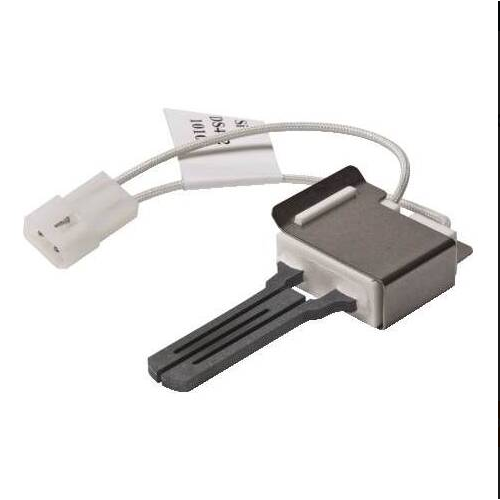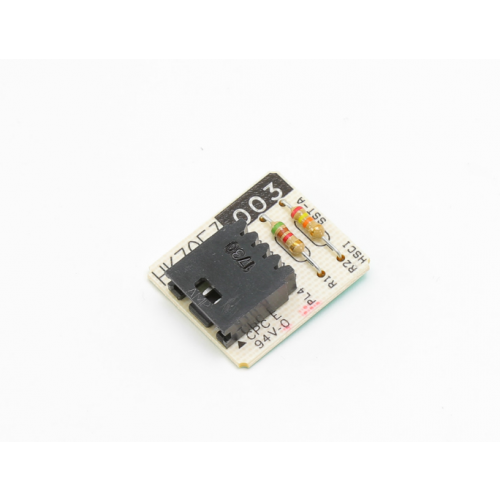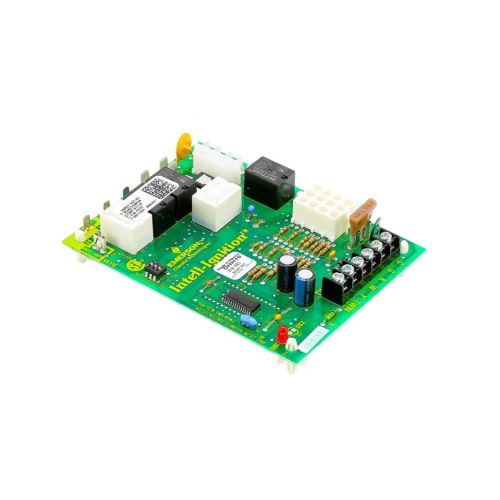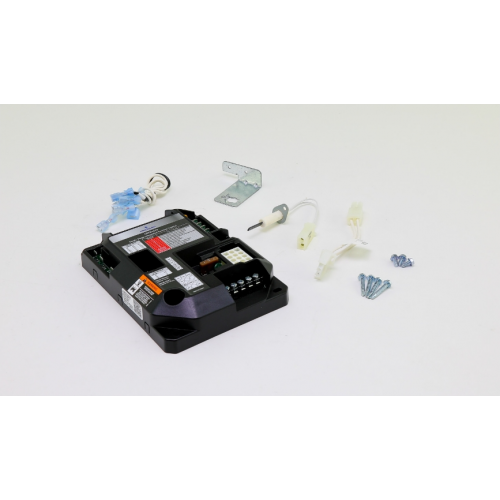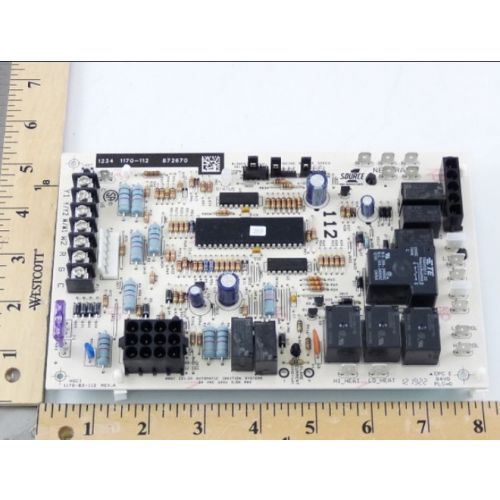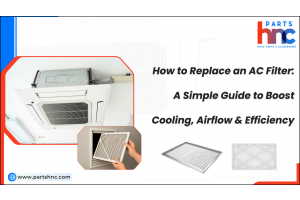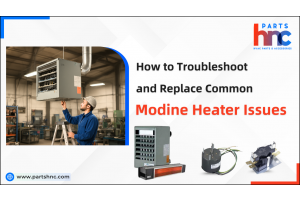Furnace Pressure Switch Troubleshooting: Here's Everything You Need to Know
The furnace pressure switch plays a crucial role in the smooth operation of HVAC (Heating, Ventilation, and Air Conditioning) systems. Acting as a safety device, it ensures that there is proper airflow within the furnace before allowing ignition and the release of fuel. Without a functioning pressure switch furnace may not start or could pose potential hazards. Furnace pressure switch troubleshooting is of utmost importance to maintain optimal performance and ensure the overall efficiency and safety of the HVAC system. In this furnace troubleshooting guide, we will explore what is a pressure switch on a furnace, how it works and furnace pressure switch troubleshooting steps to help you diagnose and resolve problems related to the furnace pressure switch.
What is a pressure switch on a furnace?
A pressure switch for furnace is a safety device that monitors the pressure within the system and ensures proper operation. It plays a crucial role in determining whether the furnace can proceed with the ignition process or needs to shut down due to an abnormal pressure condition.
Let us look at the pressure switch types available to suit various furnace configurations:
-
Single-Stage Conventional Furnace Pressure Switch: This type has one tube connected to the draft inducer motor. Once the inducer starts and confirms the pressure requirement, the switch's electrical connection closes, allowing electricity to pass through.
-
Single-Stage Condensing Furnace Pressure Switch: This variant features two hoses—one connected to the burner enclosure and the other to the condensate collector box. It checks for a pressure difference between the two, distinguishing it from a conventional furnace pressure switch.
-
Two-Stage Condensing Furnace Pressure Switch: Similar to the single-stage condensing switch, this type also utilizes two pressure switches. Usually installed as a combined part, these switches ensure proper functioning of the furnace.
Now that you know what is a pressure switch on a furnace. Let us find out how does a furnace pressure switch work.
How does a furnace pressure switch work?
Pressure switch for furnace works by monitoring the pressure within the furnace combustion chamber. When the furnace starts, the pressure switch detects the air pressure and verifies if it's within the acceptable range. If the pressure is adequate, the switch remains open, allowing the furnace to continue operating. However, if the pressure drops below the predetermined threshold, indicating a potential problem like a blocked flue or an improper combustion process, the switch will close and interrupt the furnace operation, preventing any further damage or safety hazards.
We know how a furnace pressure switch works. But do you know where is the pressure switch on a furnace? Read on to find out more!
Where Is the Pressure Switch located on a Furnace?
The pressure switch for furnace is typically located near the blower motor assembly or the draft inducer motor. It is typically mounted on or close to the furnace's main housing or side panel. Depending on the furnace's model and manufacturer, the precise location may change. To locate the pressure switch, you may need to remove the furnace cover or access panels. It is important to refer to the furnace's user manual or consult a professional technician for specific instructions on locating the pressure switch in your particular furnace model to ensure safe and accurate identification.
What happens when a furnace pressure switch goes bad?
We know that a pressure switch plays a crucial role in ensuring the safe operation of the furnace. Then, what happens when a furnace pressure switch goes bad? Several problems may occur as a result of a faulty furnace pressure switch.
-
Furnace Fails to Ignite: If the pressure switch fails, the furnace may not receive the proper signals to ignite, causing it to fail to start.
-
Furnace Shuts Off Abruptly: A bad pressure switch can cause the furnace to turn off unexpectedly, disrupting heating and causing discomfort.
-
Insufficient Heat Production: A faulty pressure switch may lead to inadequate heat production, leaving your home cold and uncomfortable.
-
Poor Warm Air Distribution: Inefficient warm air circulation might occur if the pressure switch is malfunctioning, affecting the overall heating performance.
-
Short Cycling: A defective pressure switch can cause the furnace to constantly turn on and off, known as short cycling, which wastes energy and reduces efficiency.
-
Increased Risk of Carbon Monoxide Leaks: When the pressure switch doesn’t function correctly, it can compromise the furnace’s safety mechanisms, potentially leading to dangerous carbon monoxide leaks.
-
System Lockout: A malfunctioning pressure switch may trigger a system lockout, where the furnace stops working entirely, requiring a reset or repair.
Step-by-Step Furnace Pressure Switch Troubleshooting Guide
Gathering the tools you might need for furnace pressure switch troubleshooting is important before beginning the process of learning how to fix a pressure switch on a furnace. Screwdrivers, a torch, a multimeter and a pressure switch hose are some of these tools. Once you have these tools ready, follow the step-by-step guide below for furnace pressure switch troubleshooting and fix the issue.
Turn off the power to your furnace and the gas supply
Find the disconnect switch close to the furnace, and turn it off. Turn off the furnace's breaker in the house's breaker box if you can't find a disconnect switch (service panel). As a result, working on the furnace is safe for you.
Inspect the Pressure Switch Hose
Remove the boiler doors, then check the hoses that are attached to the pressure switch. Make sure the hose is in good condition and connected at both ends. The hose must be replaced if it is cracked, frayed, or old. The pressure switch may be unable to transfer the required voltage to the other terminal due to a damaged hose.
Check for any hindrance in the hose
Note the location of the pressure switch hose(s) and remove them. Remove each hose one at a time if there are several. Check to see if the hose is blocked on the inside, but refrain from blowing into it.
Check the Hose Port
Check the hose port with a torch to make sure it is free of any obstructions. Use a small screwdriver or other similar tool to carefully remove any debris or obstructions you find. While doing this, take care not to harm the pressure switch body.
Inspect the Furnace Cover
Examine and, if necessary, clean the vent slots on the furnace cover. The pressure switch's ability to function properly can be hampered by the accumulation of dust, dirt, or debris in these slots.
Look for Vent Blockage
Check the vent pipe for obstructions if you have a condensing boiler. Usually made of PVC, the vent pipe protrudes from the side of the wall or through the roof. Make sure there aren't any obstacles in the way that could obstruct proper airflow.
Check the Pressure Switch Body
Take the wires out of the pressure switch if the inducer, a device that aids in venting gases from the boiler, does not turn on. In order to help it reopen and enable the device to start, lightly tap on the pressure switch body. The pressure switch will still need to be replaced, so keep in mind that this is only a temporary fix.
Test the Switch for Resistance
Remove the wires from the switch terminals if the pressure switch indicates an open fault. Set the ohms setting on your multimeter (resistance). Each probe should be pressed against a switch terminal. A qualified HVAC technician must replace the switch if the reading is greater than or nearly equal to 0, which indicates that it has failed.
Test the Furnace Operation
Replace the furnace access panel after rewiring the pressure switch. To make sure the furnace is operating properly, turn it on once more. If the furnace still won't work, the issue might be elsewhere, so it's advised to consult a licenced HVAC expert to identify and fix the problem.
How much does it cost to replace the pressure switch on the furnace?
The cost to replace a pressure switch on a furnace can vary depending on various factors. Generally, the replacement furnace pressure switch cost range from $50 to $200, depending on the brand and model of the furnace. Labor costs for a professional HVAC technician to install the pressure switch can range from $100 to $300, depending on the complexity of the job and the local labor rates. Here is a table representing the approximate furnace pressure switch cost in different types of furnaces:
|
Furnace Type |
Furnace pressure switch cost |
|
Gas furnace pressure switch |
$150 - $400 |
|
Electric Furnace pressure switch |
$100 - $300 |
|
Oil Furnace pressure switch |
$200 - $500 |
|
Dual Fuel Furnace pressure switch |
$200 - $500 |
Know more about How to replace a Furnace blower motor.
How to Test Furnace Pressure Switch?
If you suspect that the pressure switch may be faulty and causing issues with your furnace, you can perform some simple tests to assess its condition. Here's a step-by-step guide on how to test furnace pressure switch:
-
Safety precautions: Before starting any work on your furnace, ensure that the power supply to the unit is turned off. This will prevent any accidents or electrical shocks.
-
Locate the pressure switch: The pressure switch is typically located near the furnace blower assembly. It is a small, rectangular or circular device with wires connected to it.
-
Inspect the pressure switch: Check the pressure switch for any visible signs of damage, such as cracks, rust, or loose connections. If you notice any significant damage, the pressure switch may need to be replaced.
-
Disconnect the wires: Carefully disconnect the wires connected to the pressure switch. Take note of their positions or use a camera to document the wiring configuration for easier reconnection later.
-
Set the multimeter: Set your multimeter to measure continuity or resistance. If you are unsure how to do this, refer to the user manual of your multimeter for specific instructions.
-
Test for continuity: Touch the probes of the multimeter to the terminals of the pressure switch. If the pressure switch is in a closed state (meaning it has continuity), the multimeter should display a reading of zero or near zero resistance. If the switch is open, the multimeter will display infinite resistance or no continuity.
-
Apply pressure to the switch: Use a small tool or your finger to manually activate the pressure switch. Apply gentle pressure to the switch's diaphragm or sensing port. This action should cause the switch to close, simulating the conditions when the furnace is running.
-
Test continuity again: While applying pressure to the switch, retest for continuity using the multimeter as described in step 6. If the pressure switch is working correctly, it should now display continuity (zero or near-zero resistance). If not, the pressure switch may be faulty.
-
Replace or repair: If the pressure switch fails the continuity test or shows signs of damage, it is likely faulty and needs to be replaced. Consult a professional HVAC technician for further assistance or to obtain a suitable replacement part.
Know more about why is your Furnace Tripping your circuit breaker.
Where to Buy Furnace Pressure Switch
If you are looking for a reliable place to buy furnace pressure switch, then look no further than PartsHnC. We offer a wide range of HVAC parts, including furnace pressure switches, from trusted brands. Our competitive prices ensure you get the best value for your money. But that's not all – we also provide various other furnace parts, such as blower motors, thermostats, thermocouples, control boards, and more.
Best Furnace Pressure Switch Manufacturer Brands
When it comes to furnace pressure switch manufacturers, several top brands have established themselves as reliable and trusted options.
-
Lennox is known for its high-quality products and advanced technology.
-
Nordyne offers a wide range of pressure switches with excellent performance.
-
Goodman is renowned for its durable and affordable switches.
-
Carrier is a trusted name in the industry, providing efficient and reliable pressure switches.
-
Trane is known for its innovative designs and long-lasting switches.
-
Rheem-Ruud offers a diverse selection of pressure switches that cater to different furnace models.
These brands have consistently delivered reliable and high-performance pressure switches, making them the best in the market.
Troubleshooting furnace pressure switch issues is essential for maintaining a well-functioning heating system. By understanding the common problems and following the troubleshooting steps outlined in this guide, you can effectively diagnose and resolve issues related to the pressure switch. Remember to prioritize safety and consult a professional if you're unsure or uncomfortable with any aspect of the troubleshooting process.
FAQs
How to Fix Furnace Pressure Switch Stuck Open?
Here are steps to fix a pressure switch furnace stuck open:
-
First, ensure the power is turned off.
-
Then, check for any debris or obstructions in the pressure switch tubing and clean or replace it if necessary.
How to Fix Pressure Switch on Furnace?
In order to fix a pressure switch on a furnace:
-
Turn off the power first.
-
Check the pressure switch tubing for obstructions or damage; if necessary, clean or replace it.
-
Make sure the electrical connections are secure and check them as well.
Is It Safe to Bypass a Pressure Switch on a Furnace?
No, it is not safe to bypass a pressure switch on a furnace. The pressure switch serves as a crucial safety component that detects issues like blocked vents or faulty inducer motors. Bypassing it can lead to unsafe operating conditions, potential damage to the furnace, and even pose a risk of carbon monoxide poisoning.
How to test a furnace air pressure switch?
To test a furnace air pressure switch, use a multimeter to check for continuity while the furnace is running. If there's no continuity, the switch may be faulty and need replacement.
How to check a pressure switch on a furnace?
To check the pressure switch on a furnace, ensure it's properly connected, then test its operation by checking for voltage changes when the furnace cycles on and off.




